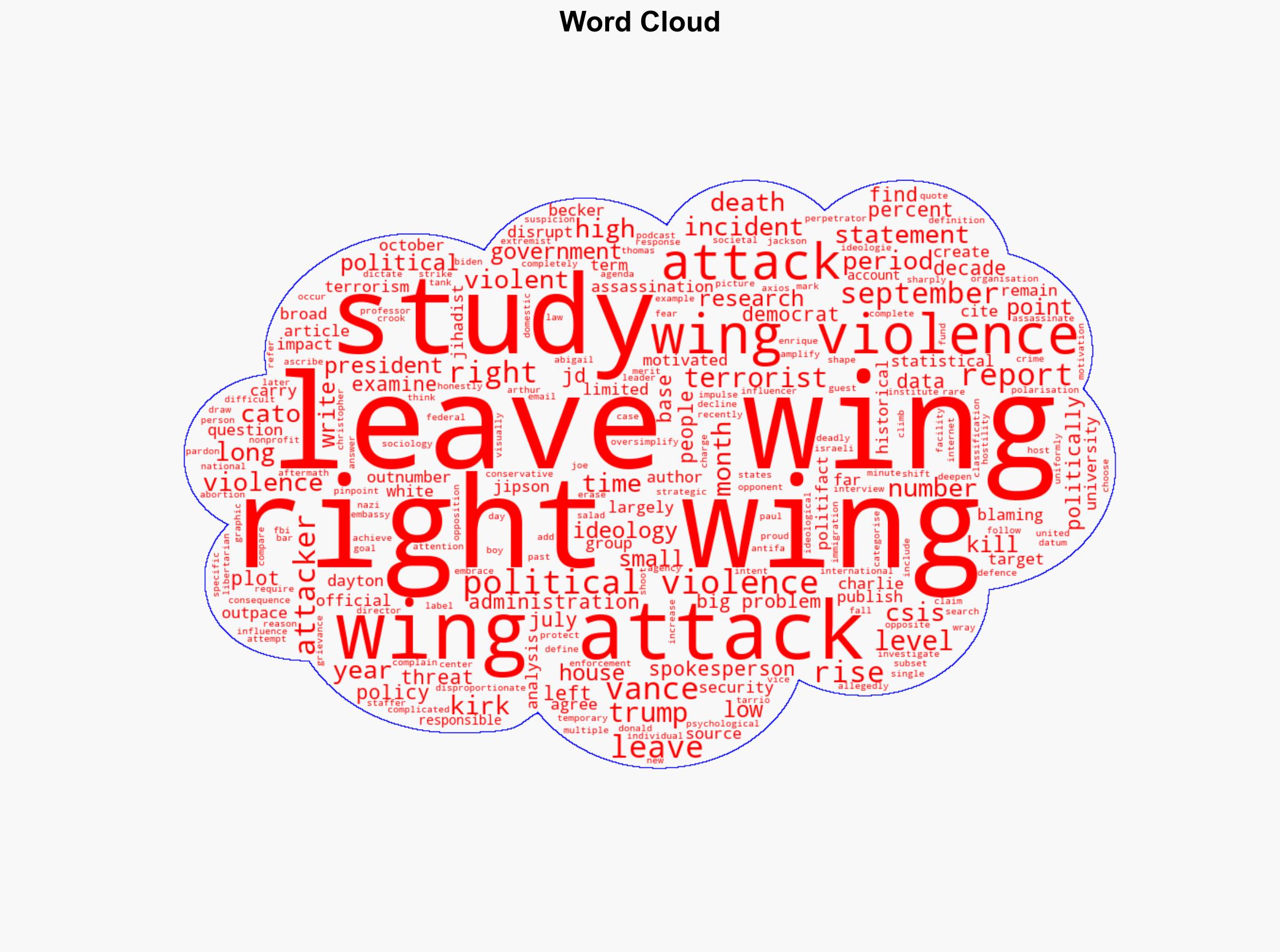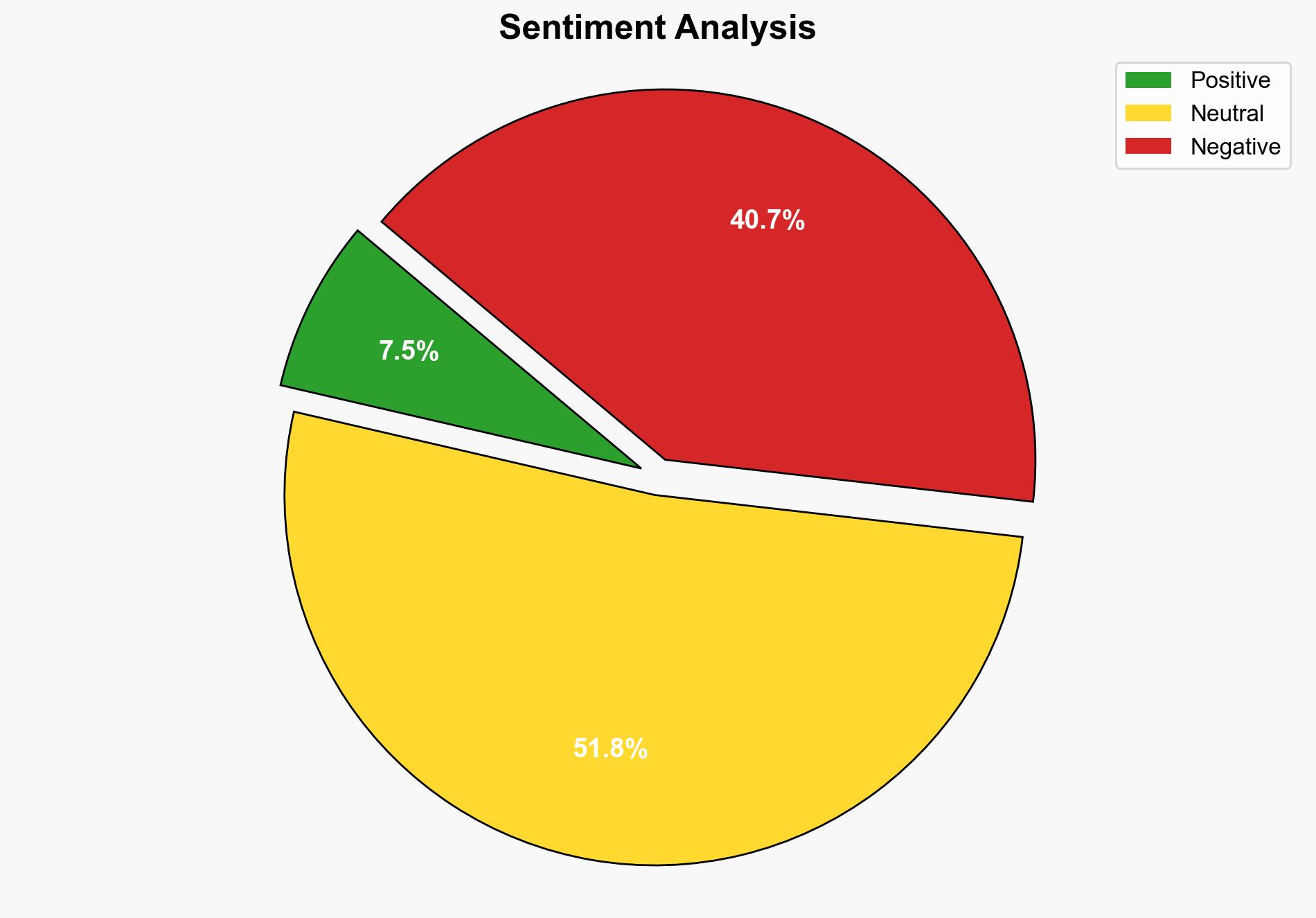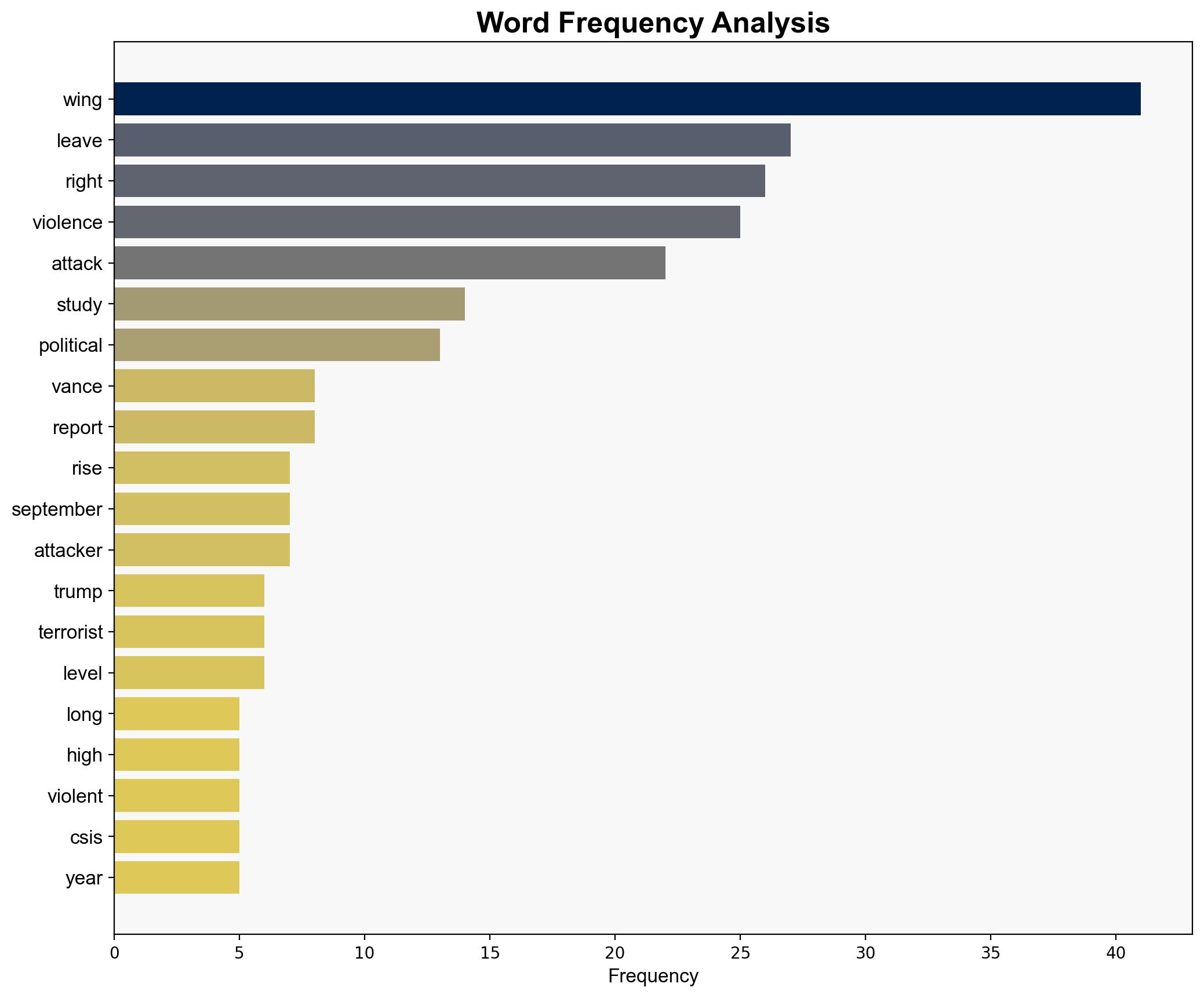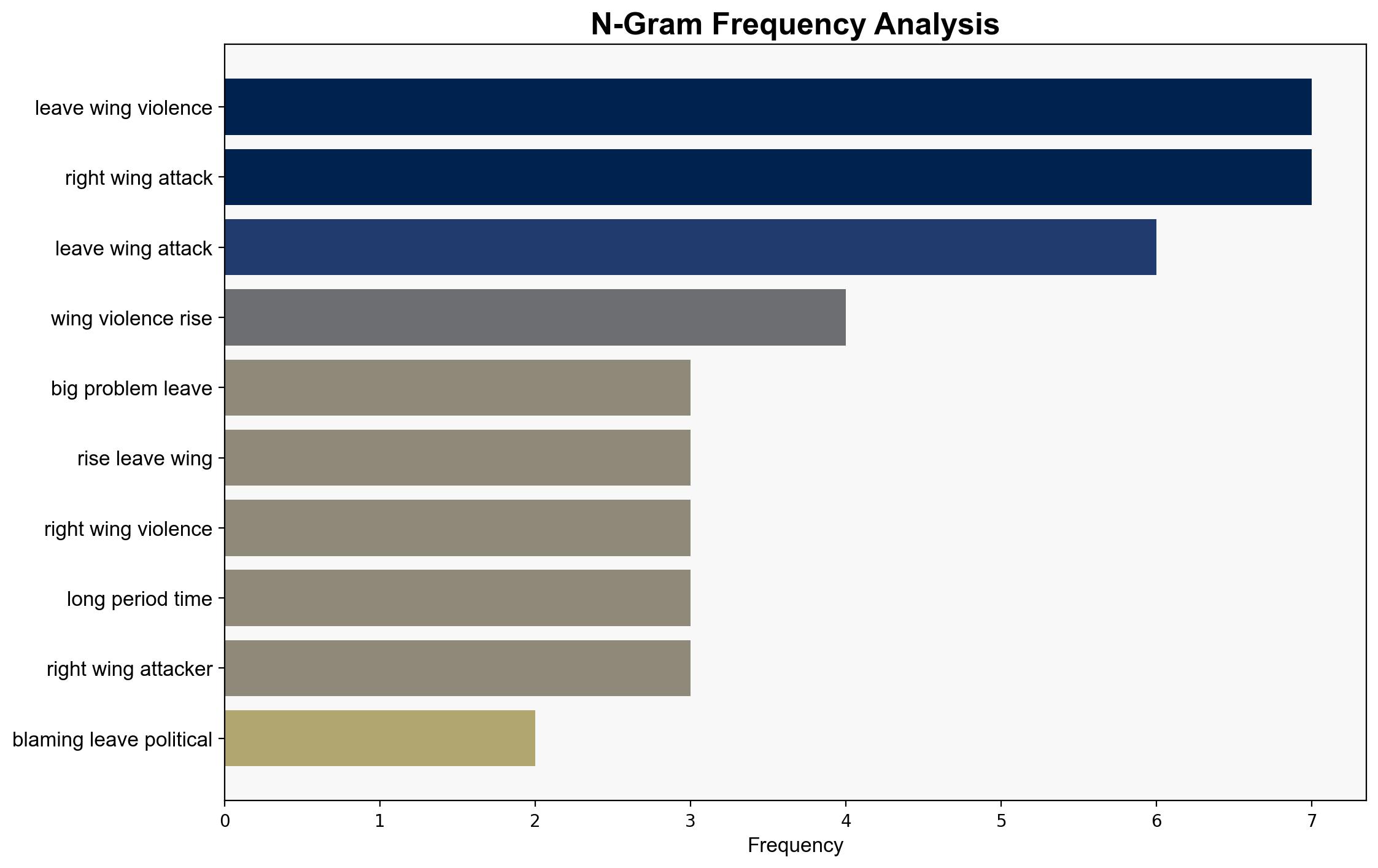Is JD Vance right in blaming left for political violence in the US – Al Jazeera English
Published on: 2025-10-22
Intelligence Report: Is JD Vance right in blaming left for political violence in the US – Al Jazeera English
1. BLUF (Bottom Line Up Front)
The analysis suggests that JD Vance’s claim that left-wing violence is a significant driver of political violence in the US is not strongly supported by available data. The hypothesis that right-wing violence remains a more prevalent threat is better supported by historical and recent data. Confidence level: Moderate. Recommended action: Enhance monitoring of all political violence sources, with a focus on addressing right-wing extremism, while not neglecting emerging left-wing threats.
2. Competing Hypotheses
Hypothesis 1: Left-wing political violence is on the rise and poses a significant threat to national security. This hypothesis is supported by recent claims of increased left-wing terrorism and specific incidents of violence attributed to left-wing groups.
Hypothesis 2: Right-wing political violence continues to be the dominant threat in the US, with historical data showing a higher frequency and impact of right-wing attacks compared to left-wing violence. This hypothesis is supported by long-term data trends and reports from organizations like CSIS.
3. Key Assumptions and Red Flags
Assumptions:
– Hypothesis 1 assumes that recent left-wing incidents are indicative of a broader trend rather than isolated events.
– Hypothesis 2 assumes that historical data trends are predictive of future patterns.
Red Flags:
– Potential bias in data interpretation, as political violence is often ideologically charged.
– Incomplete data on the motivations behind specific violent acts, complicating attribution to left or right-wing ideologies.
– Over-reliance on specific incidents without considering broader context.
4. Implications and Strategic Risks
The rise in political violence, regardless of ideological origin, poses risks of increased societal polarization and potential destabilization. There is a risk of policy overreaction or misallocation of resources if one type of violence is disproportionately emphasized. Additionally, the amplification of isolated incidents can exacerbate public fear and influence policy disproportionately.
5. Recommendations and Outlook
- Enhance intelligence gathering on both left and right-wing extremist groups to ensure balanced threat assessments.
- Implement community engagement programs to address underlying grievances that fuel political violence.
- Scenario-based projections:
- Best Case: Balanced policy response reduces political violence and societal polarization.
- Worst Case: Misguided focus on one ideological threat leads to increased violence from the neglected side.
- Most Likely: Continued prevalence of right-wing violence with periodic left-wing incidents, necessitating ongoing vigilance.
6. Key Individuals and Entities
JD Vance, Charlie Kirk, Enrique Tarrio
7. Thematic Tags
national security threats, counter-terrorism, political violence, societal polarization





